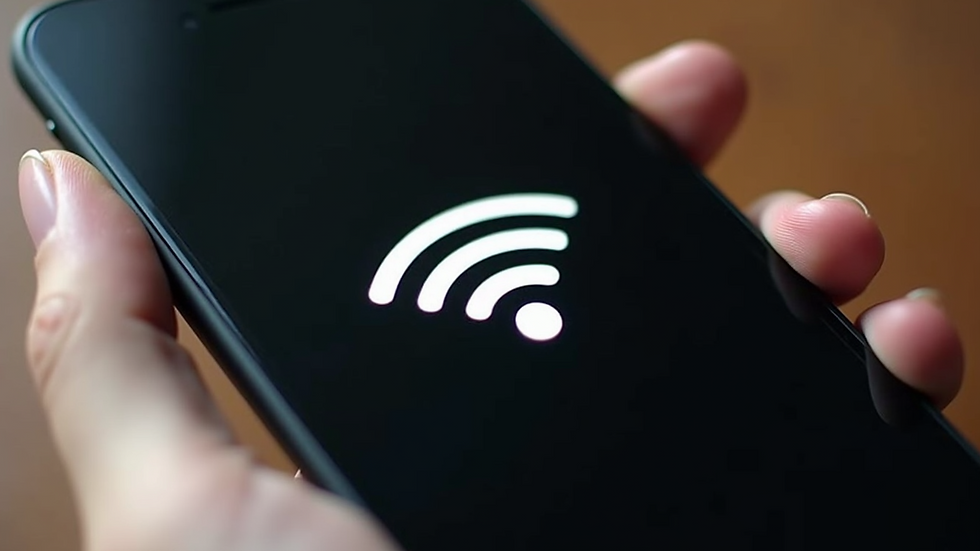Understanding How Modern Networks Keep You Connected
- Home Network Specialists

- Jul 16
- 4 min read
In today's digital world, modern networks are the backbone that allow us to stay connected, work efficiently, and access endless information. With the rise of smartphones, smart homes, and cloud computing, understanding how these networks function has never been more critical. This blog post aims to take you through the essential aspects of modern networking technology that keep you plugged into the digital universe.
What are Modern Networks?
Modern networks encompass a various technologies and frameworks that allow devices to connect, communicate, and share data efficiently. Whether it's the internet that connects billions of people worldwide, or a small home network that allows family members to share resources, these systems are designed to operate seamlessly.
One of the driving factors behind modern networks is the data speed they can provide. According to recent statistics, high-speed internet access has more than tripled over the last decade, making it possible to stream videos in high definition, play online games, and work remotely with minimal disruptions. Modern networks use various technologies, including fiber optics, 4G, and 5G, to achieve these impressive speeds.

The Evolution of Networking Technologies
Networking technologies have evolved dramatically over the years. From the early days of dial-up connections, which could only support simple text communication, we have moved to broadband technologies that enable high-speed access to a wealth of online content.
Home networks today commonly use Wi-Fi technology. A study shows that over 85% of households in developed countries are connected to the internet, primarily through Wi-Fi solutions. This technology allows devices like smartphones, tablets, and laptops to connect to the internet wirelessly, making it easier for users to access information and entertainment.
Modern networks also utilize advanced protocols to enhance communication reliability and speed. For example, the IEEE 802.11ac protocol can deliver Wi-Fi speeds of over 1 Gbps, enabling smoother streaming, online gaming, and fast downloads.
What are Wireless Network Solutions?
Wireless network solutions are a key component of modern networks. They provide the flexibility and convenience needed in today's fast-paced world. With wireless networks, you can access the internet without being confined by cables, making it easier to work, play, and manage smart devices around your home or office.
One critical aspect of wireless networks is the use of various frequency bands. Commonly, you will find devices using the 2.4 GHz and 5 GHz bands. The 2.4 GHz band offers a broader range but lower speeds, while the 5 GHz band provides faster speeds with a shorter range. Knowing which band to use for specific applications can optimize your network performance.

The Importance of Network Security
As more devices connect to modern networks, security becomes a growing concern. Cybersecurity threats are on the rise, and secure networking practices are essential to protect personal information and sensitive data.
Best practices in network security often start with using strong, unique passwords for your Wi-Fi network. Employing WPA3 encryption, which offers better security features than previous standards, is also highly recommended. Moreover, consistently updating your router's firmware is crucial as it mitigates potential vulnerabilities.
Many people underestimate the risks associated with unsecured networks. A study indicates that about 43% of cyberattacks target small businesses, making it vital for home users and small enterprises to take cybersecurity seriously. Ensuring secure wifi and networking solutions can prevent unauthorized access and safeguard personal data.
Future Trends in Networking
Looking forward, several trends are shaping the landscape of modern networks. One notable trend is the expansion of 5G technology. This new generation of mobile networks promises to provide incredibly fast data speeds and lower latency, allowing for advancements in IoT (Internet of Things) applications, smart cities, and autonomous vehicles. By 2025, it is expected that 5G will cover about 40% of the world's population.
Another trend is the growth of mesh networks. Unlike traditional routers that create a single point of Wi-Fi coverage, mesh networks use multiple devices to spread Wi-Fi signals evenly across larger areas. This technology addresses common coverage problems in homes or businesses, ensuring you stay connected even in dead zones.
Staying Connected in a Digital World
As we continue to rely on modern networks for work, communication, and entertainment, keeping abreast of the technologies that facilitate connectivity becomes crucial. Understanding how these networks function, their importance, and the emerging trends can empower you to make informed decisions about your home or business network. Whether you are streaming a movie at home or holding a virtual meeting, modern networks are essential for staying connected in our digital world.
Incorporating secure practices, choosing efficient wireless network solutions, and keeping up with future advancements will not only enhance your experience but will also prepare you for a more connected future. Explore how you can elevate your network experience today!
Remember, a well-structured, secure, and efficient network is not just about having the latest router or the fastest internet plan; it's about understanding how all the pieces fit together in this vast, interconnected world.





Comments